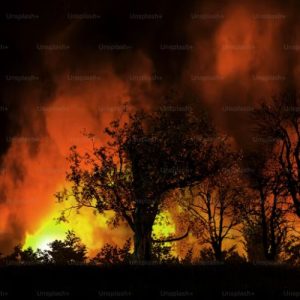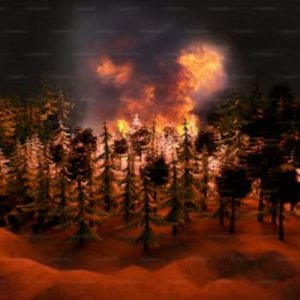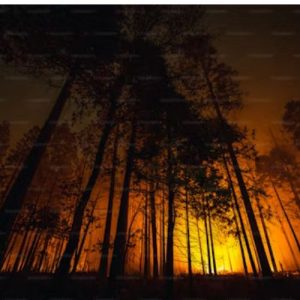California wildfires fuelled by months of unusual extreme weather – Fast-moving wildfires are burning long after the regular fire season is over due to an unlikely sequence of extreme weather events that may have been exacerbated by climate change.
Fast-moving wildfires are burning out of control in the Los Angeles area long after fire season normally ends in California. Powerful Santa Ana winds are not unusual for this time of year but they have arrived after months of drought. The combination has led to a disastrous series of fires, in a possible indication of how climate change is shifting the way fires behave in the state.

While Santa Ana fires are nothing new in southern California, this type of explosive fire event has never happened in January before, and it’s only happened once in December,” says Crystal Kolden at the University of California, Merced.
As of 8 January, at least four wildfires were burning in the Los Angeles area, according to the California Department of Forestry and Fire Protection. The two largest are the Palisades fire and the Eaton fire, each of which has burned over 4000 hectares (10,000 acres) in a single day. The fires have killed at least two people and destroyed at least a thousand homes, besides forcing tens of thousands of people to evacuate. The fires have also threatened NASA’s Jet Propulsion Laboratory and the Getty Museum.
 These strong Santa Ana winds have been clocked at as high as 129 kilometers (80 miles) per hour, fanning the flames and driving their rapid spread. The windstorm is expected to be the most intense one since 2011, with “extremely critical fire weather conditions” forecast to continue through the afternoon of 8 January, according to the US National Weather Service. Fire weather could continue as late as 10 January, challenging firefighting efforts.
These strong Santa Ana winds have been clocked at as high as 129 kilometers (80 miles) per hour, fanning the flames and driving their rapid spread. The windstorm is expected to be the most intense one since 2011, with “extremely critical fire weather conditions” forecast to continue through the afternoon of 8 January, according to the US National Weather Service. Fire weather could continue as late as 10 January, challenging firefighting efforts.
This is the latest in a “very highly improbable sequence of extreme climate and weather events” that have contributed to the intense fires, says Park Williams at the University of California, Los Angeles (UCLA). The Santa Anas are a regular feature of southern California weather, but wet fall and winter weather usually limit their influence on fires. This year, that rain has not yet come, and the vegetation is parched and ready to burn. There is also more vegetation as fuel, due to a wet winter in 2023 that promoted growth. The intense heat and drought of 2024 dried it out.
The combination of lots of fine fuel, drought, and strong, hot, dry winds makes for “the most explosive fire behavior imaginable”, says Kolden.
 Officials are still investigating what ignited the blazes. Understanding what role climate change may have played will also take some time. But there is reason to think it has made the fires worse.
Officials are still investigating what ignited the blazes. Understanding what role climate change may have played will also take some time. But there is reason to think it has made the fires worse.
Above-average sea surface temperatures in the Pacific Ocean, partly driven by climate change, have also played a part in the dry conditions. According to Daniel Swain at UCLA, these warmer ocean temperatures have produced a ridge of high pressure which has blocked wet weather carried on the jet stream from reaching southern California.
This type of high-pressure weather system has occurred more frequently in the region over the past fifty years, which may be a symptom of climate change, says Daniel Cayan at the University of California, San Diego.

























